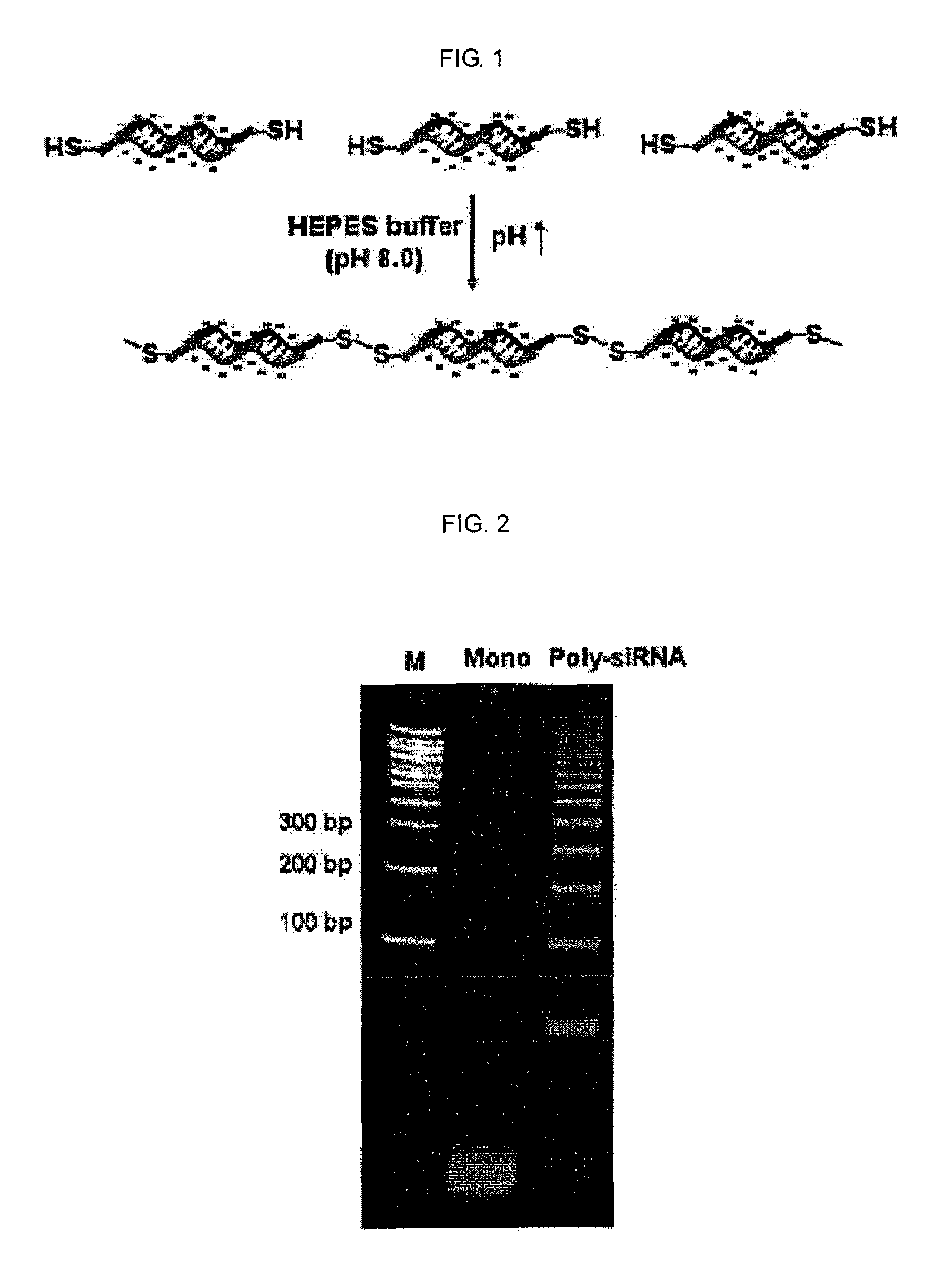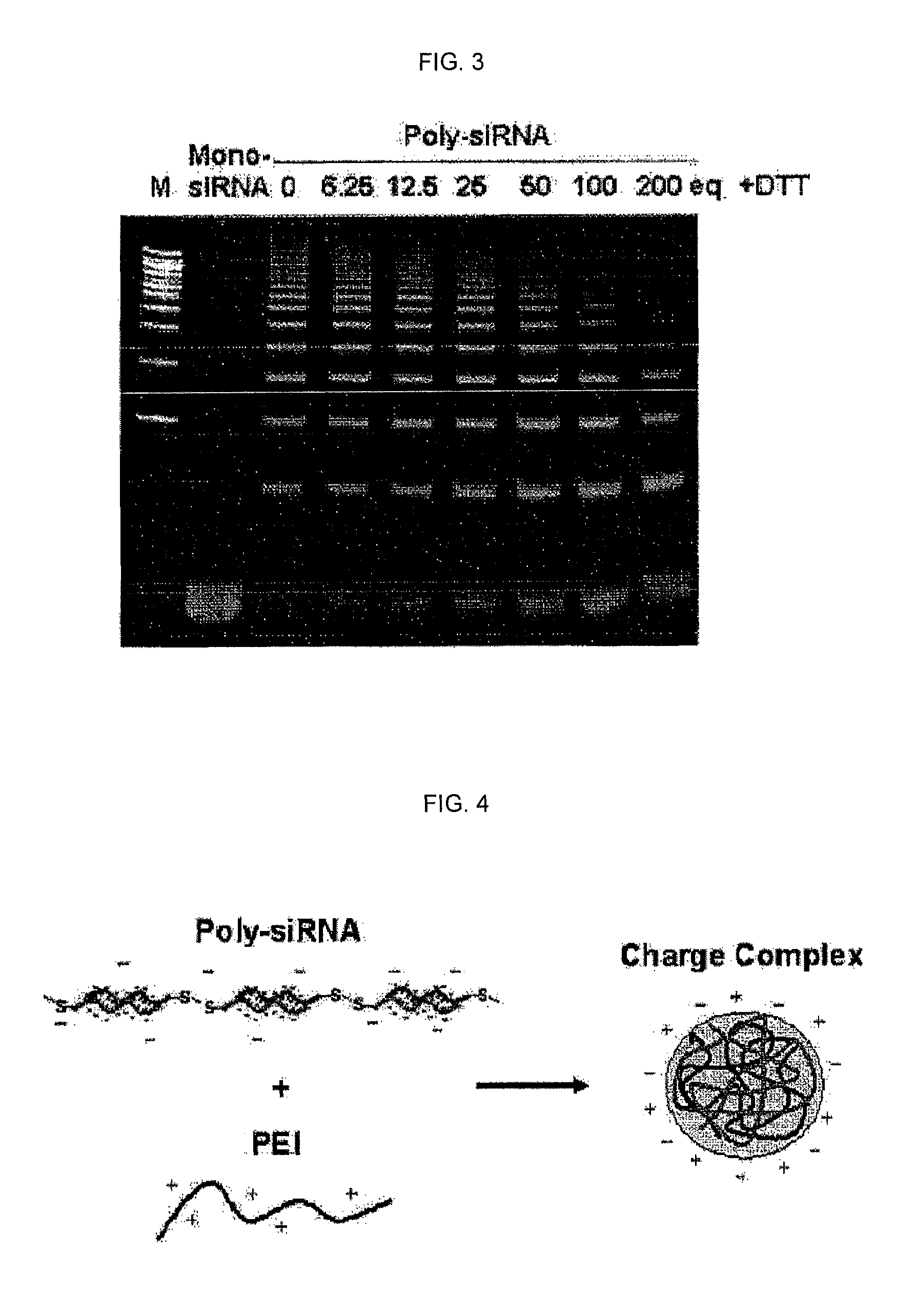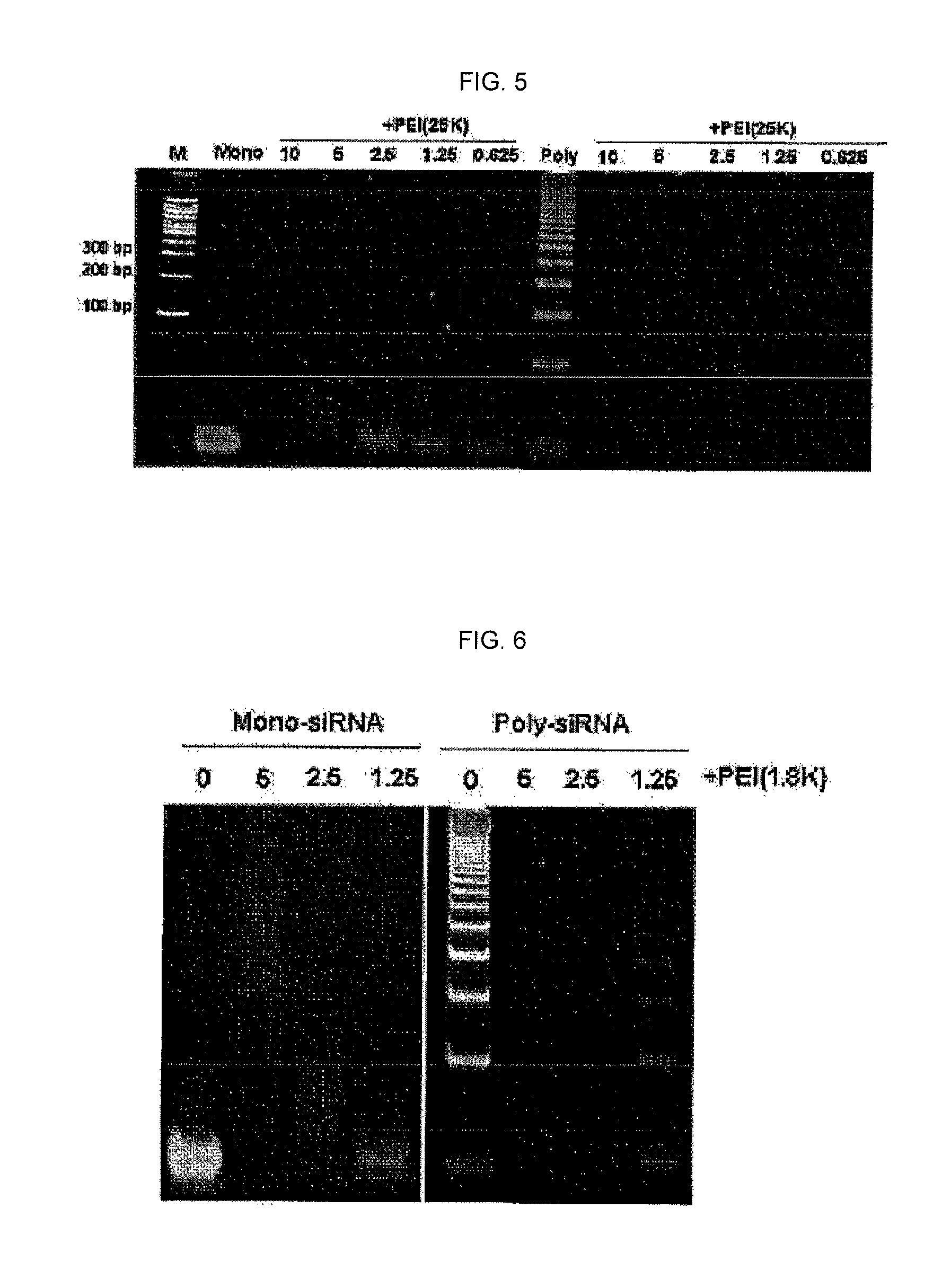Method for polymerizing a small oligonucleotide, and use of a high-molecular oligonucleotide prepared by the polymerization method
a technology of oligonucleotide and polymerization method, which is applied in the direction of natural mineral layered products, synthetic resin layered products, dna/rna fragmentation, etc., can solve the problems of easy degradation, difficult penetration of oligonucleotide such as sirna into the cell membrane having the same negative charge, and difficult transfer of oligonucleotide, etc., to achieve stable suppression of expression of target diseas
- Summary
- Abstract
- Description
- Claims
- Application Information
AI Technical Summary
Benefits of technology
Problems solved by technology
Method used
Image
Examples
example 1
Preparation of High-Molecular Oligonucleotide (Poly-siRNA (RFP))
[0039]2 mg of dithiol-siRNA (RFP) was melted in 10 μl of 10 mM HEPES buffer (1 mM EDTA, pH 8.0) to be stirred at room temperature for 12 hours, thereby preparing various high-molecular oligonucleotides (poly-siRNA (RFP)), which had a disulfide bond and a molecular weight in the range of 160 to 2000 bp (see FIG. 1).
example 2
Molecular Weight Comparison of Oligonucleotide (Mono-siRNA (RFP)) and High-Molecular Oligonucleotide (Poly-siRNA (RFP)) Through Electrophoresis
[0040]500 ng / 1 μl of oligonucleotides (mono-siRNA (RFP)) with a molecular weight of 21 bp and high-molecular weight oligonucleotides (poly-siRNA (RFP)), both which were dissolved in the HEPES buffer (pH 8.0), were mixed with 1 μl of loading buffer and 8 μl of DEPC water. Such mixture was loaded in 8% acrylamide gel together with a molecular weight marker (100 bp ladder), followed by an electrophoresis under condition of 150V for 35 minutes. Afterwards, SyBr-gold staining was performed to confirm a polymerized pattern via a fluorescent image. It was exhibited through the comparison with the marker that various high-molecular oligonucleotides (poly-siRNA (RFP)) with molecular weights in the range of 160 to 2000 bp were prepared (see FIG. 2).
example 3
Confirmation of Depolymerization of High-Molecular Oligonucleotide (Poly-siRNA (RFP)) According to Dithiothreitol (DTT) Concentration Through Electrophoresis
[0041]10 μg / 10 μl of high-molecular oligonucleotides (poly-siRNA (RFP)) melted in the HEPES buffer (pH 8.0) were mixed with 200-1 times mol excess of DTT (25 μg / 10 μl-0 μg / 10 μl), respectively. The mixture was left as it was at 37° C. for 90 minutes, followed by the electrophoresis the same as that in Example 2, thereby obtaining a fluorescent image. As shown in FIG. 3, it was confirmed that the high-molecular oligonucleotides were degraded into oligonucleotides (mono-siRNA (RFP)) by the DTT, which lysed a disulfide bond (see FIG. 3). That is, it was exhibited that the bonding of the high-molecular oligonucleotides was enabled by the disulfide bond.
PUM
| Property | Measurement | Unit |
|---|---|---|
| diameter | aaaaa | aaaaa |
| diameter | aaaaa | aaaaa |
| size | aaaaa | aaaaa |
Abstract
Description
Claims
Application Information
 Login to View More
Login to View More - R&D
- Intellectual Property
- Life Sciences
- Materials
- Tech Scout
- Unparalleled Data Quality
- Higher Quality Content
- 60% Fewer Hallucinations
Browse by: Latest US Patents, China's latest patents, Technical Efficacy Thesaurus, Application Domain, Technology Topic, Popular Technical Reports.
© 2025 PatSnap. All rights reserved.Legal|Privacy policy|Modern Slavery Act Transparency Statement|Sitemap|About US| Contact US: help@patsnap.com



